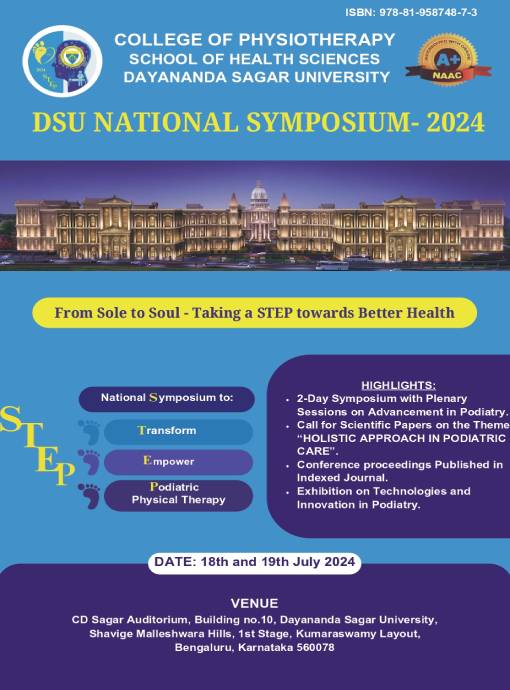Effect of Active Release Technique Versus Positional Release Therapy in Subjects with Piriformis Syndrome - A Quasi Experimental Study
DOI:
https://doi.org/10.18311/DSUPHY/9788195874873/2024/050Keywords:
ART; FAIR Test; Piriformis syndrome; PRTAbstract
Background: Piriformis syndrome is defined as a neuritis of the branches of the sciatic nerve caused by pressure of an injured or irritated piriformis muscle. Symptoms typically consist of gluteal pain that radiates into the hip, posterior thigh, and the proximal portion of leg and the pain increases with sitting or squatting, but persons with Piriformis syndrome may experience difficulty with walking or other functional activities. Attiq Ur Rehman, stated that ART is more effective in improving functional disability in Piriformis syndrome. Amber H. Bethers stated that effect of PRT is more effective at decreasing pain and decreasing pressure sensitivity.So, the aim of the study was to compare the effect of Active Release Technique (ART) and Positional Release Therapy (PRT) in subjects with Piriformis syndromes.
Objective: To assess and compare the effect of active release technique and positional release therapy in subjects with Piriformis syndrome.
Methodology: This study was two group pre-post study design. It included individuals aged 30-50 having Piriformis syndrome. 75 participants were screened and 60 were recruited based on inclusion and exclusion criteria and with “FairTest” assessment tool, Numerical Pain Rating Scale (NPRS) where measured pre intervention and post intervention for measuring pain. The intervention comprised of active release technique or positional release technique for 4 days per week for 2 weeks.
Result: Sixty patients had Piriformis syndrome. Pre-treatment no significance differences has been detected among the groups (p<0.05). Post treatment showed a significant increase in the reduction of pain with piriformis syndrome, both ART and PRT showed a reduction in pain with p value (p <0.001).
Conclusion: The study concluded that, positional release therapy demonstrate better outcomes than active release technique in management of piriformis syndrome.
 Akshata B. Basti
Akshata B. Basti
